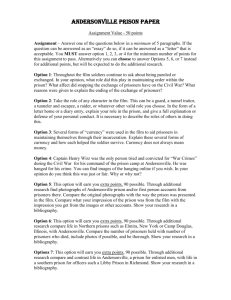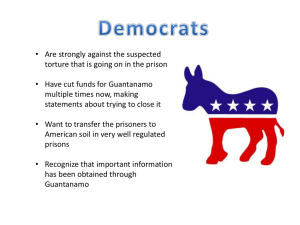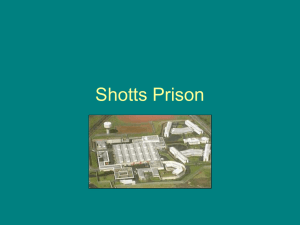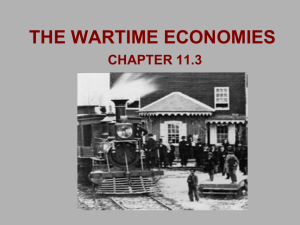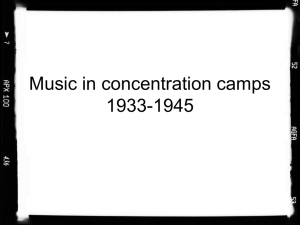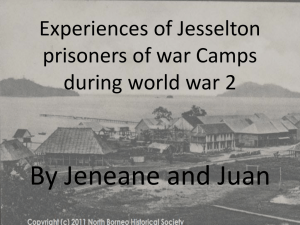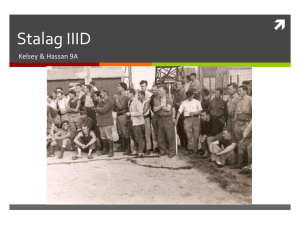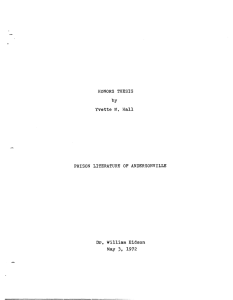CHAPTER 2- Economic Systems - Cornerstone Charter Academy
advertisement
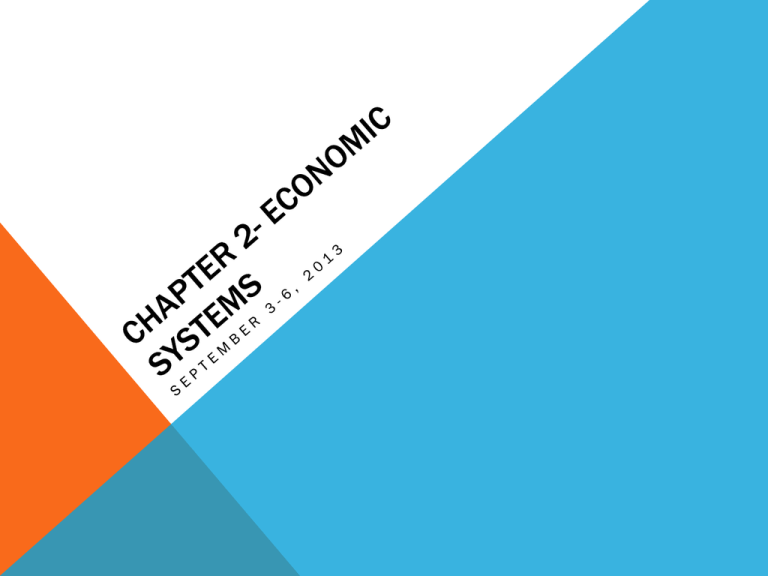
ECONOMIC SYSTEMS SIMULATION- SEPT. 3 • Traditional Economies – the allocation of scarce resources, and nearly all other economic activity, stems from ritual, habit or custom. • Command Economies – are economies in which a central authority makes most of WHAT, HOW, and FOR WHOM decisions. • Economic decisions are made by the government. • Market Economies – People and firms act in their own best interests to answer the WHAT, HOW, and FOR WHOM questions. ROCK, PAPER, OR SCISSORS Students will be playing a simulation game to understand the similarities and differences between economies. 9/4: BELLWORK What type of economy is the United States? Why? MIXED OR FREE Most economies in the world today feature some mix of traditional, command, and market economies. • The United States has a combination of command (planned) and market economies. • We have a market (free enterprise) economy with some government intervention. REVIEW PRIOR TO TODAY’S ACTIVITY Economic System: a collection of laws, institutions and, activities, that provide a framework for economic decision-making Command Economy: economic decision-making is made largely by a government authority Market Economy: economic decision-making is made by individuals in the marketplace that reflects supply and demand Scarcity: limited quantities of resources that are never enough to satisfy human wants ANDERSONVILLE PRISON • Students will be developing an economic system for this Civil War prison camp. To decide on a command or market economic system, you will need to refer to their homework in Activity 1. REMEMBER, your economic system should best provide the prisoners with food, clothing and shelter, and other basic human wants. ANDERSONVILLE- BREAK UP INTO 6 GROUPS • Each card will indicate a want that the prisoners had at the prison camp. In the space provided, each student should propose a method for providing this want using the economic system indicated. Students will complete their cards in groups. • Students will then find similar cards from other groups and work together, i.e. all students with food/command system, etc., compare their solutions. PRESENTATION OF INFORMATION In your presentations be certain to include the following: How are basic economic questions answered? How will the prison administration utilize the human resources available? What can be done to support prisoners by creating new wealth and increasing production? WHAT REALLY HAPPENED The rations provided by the Confederacy were not the only resources made available to the prisoners. Goods and money flowed into the stockade from newly captured prisoners, local civilians, and guards looking to make a profit. It was by these methods that inmates, whose daily rations were at best meager, were able to add to their diet. Food, clothing and supplies were traded with guards, or local patrons. With the availability of these limited resources, all that remained was a system for the division of these goods among the population. Inside the Andersonville prison, a group of prisoners called the Raiders banded together to improve their situation by preying on fellow prisoners. By operating in large groups, the Raiders were able to steal food, money, clothing and property by force. Prison authorities did nothing to stop the Raiders from attacking fellow inmates. New prisoners with good clothes, blankets, jewelry, and money were the favorite prey of the thieves. After selecting a victim, they would seize his possessions, club any friends who tried to assist him, and flee. One new shipment of 2000 new prisoners were dressed in new uniforms and carried well-filled knapsacks and large sums of money. Kindly appearing men would offer to show newcomers where they could sleep. Then during the night, they would come back and rob them. Finally, in July of 1864, a group of prisoners known as the 'Regulators' banded together to oppose the Raiders. The Raiders were rounded up and held captive with the commander’s permission. They were then put on trial for their deeds and six who were identified as the ring-leaders were hung. The Regulators continued to patrol the camp and, according to many, adopted some of the plundering mannerisms of the Raiders. Like most cities (Andersonville was the fifth largest "city" in the Confederacy), it included a host of tradesmen and merchants. There were representatives of many occupations. Barbers and laundries flourished. There were dentists, doctors, watchmakers, bakers, tailors, and many a cobbler repairing rotting shoes. Prisoners who had money could buy almost anything imaginable to eat. James Selman's shanty periodically offered cucumbers, watermelons, muskmelons, onions, and potatoes. Selman's prices were high because he paid enormous premiums to the farmers and women who brought their produce and baked goods to the camp. (He still made a profit). Selmans' sutlery, was only the most obvious of several grocery alternatives. Over 200 small businesses operated on Market Street inside of the stockade. Full time vendors cried out "who wants wood?", and "Here goes a bully dress coat, only $4." FINAL QUESTION "Is it appropriate to label the Andersonville system as a market economy?“ Discuss in Groups BELLWORK- 9/5 How do you define a developing country? http://www.youtube.com/watch?v=jbkSRLYSojo EVALUATING ECONOMIC PERFORMANCE AND DEVELOPMENT 1) Economic Freedom –freedom to make your own economic decisions 2) Economic Efficiency –benefits gained must be greater than costs incurred 3) Economic Equity –a strong sense of justice, impartiality, and fairness ECONOMIC PERFORMANCE AND DEVELOPMENT 4) Economic Security – protection from adverse economic events as layoffs and illnesses 5) Full Employment – to produce as many jobs as possible 6) Price Stability – steady prices, void of inflation 7) Economic Growth – to meet the needs of population growth ANALYSIS OF COUNTRIES- MDC OR LDC? COMPARITIVE ECONOMIC SYSTEMS Students will: • Analyze CIA WORLD FACTBOOK • Complete the Following Handout BELLWORK: 9/6 Why is the United States Considered an MDC? CHARACTERISTICS OF A CAPITALISTIC ECONOMY 1. Economic Freedom 2. Voluntary Exchange 3. Private Property Rights 4. Profit Motive 5. Competition THE ROLE OF THE ENTREPRENEUR • The entrepreneur is one of the most important people in a free enterprise (capitalistic) economy. The entrepreneur organizes and manages land, labor, and capital in order to seek the reward called profit. In other words – Entrepreneurs make things happen. THE ROLE OF THE CONSUMER • They control what is produced when they express their wants through purchasing goods and services. THE ROLE OF THE GOVERNMENT • Protector – The government protects property rights and enforces contracts to ensure an efficient and fair economy. • Regulator – The national government is charged with preserving competition. Local and state governments control businesses with zoning regulations, taxes, insurance rates, etc. QUIZ!!!!!

